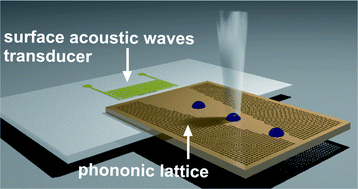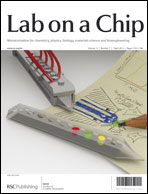Nebulisation on a disposable array structured with phononic lattices†
Abstract
We demonstrate the use of a phononic crystal to enable the nebulisation of liquid droplets from low-cost disposable arrays, using surface acoustic waves (SAW). The SAWs were generated using interdigitated transducers (IDT) on a piezoelectric surface (LiNbO3) and the acoustic waves were coupled into a disposable phononic crystal structure, referred to as a superstrate. Using its excellent reflecting properties, the phononic structures confined the acoustic field within the superstrate, resulting in the concentration of the acoustic energy, in a manner controllable by the excitation frequency. We show that this capability mitigates against coupling losses incurred by the use of a disposable superstrate, greatly reducing the time needed to nebulise a drop of


 Please wait while we load your content...
Please wait while we load your content...